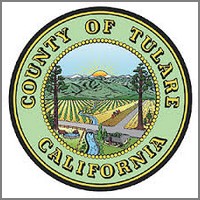
County of Tulare
Tulare County, with a population of approximately 426,000 is located in the heart of Central California at the base of the Sierra Nevada mountain range known as Sequoia Valley. Los Angeles is 200 miles to the south and the Bay Area is 225 miles to the north.
Centrally located within the State of California, Tulare County is situated in a delightful and geographically - diverse region. The County includes an area of 4,863 square miles. Mountain peaks of the Sierra Nevada range rise to more than 14,000 feet in its Eastern half. Meanwhile, the extensively cultivated and very fertile valley floor in the Western half, has allowed Tulare County to become the second-leading producer of agricultural commodities in the United States. In addition to substantial packing / shipping operations, light and medium manufacturing plants are increasing in number and are becoming an important factor in the County's total economic picture.